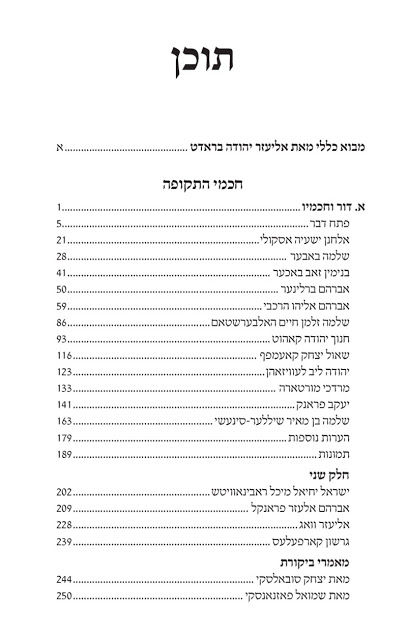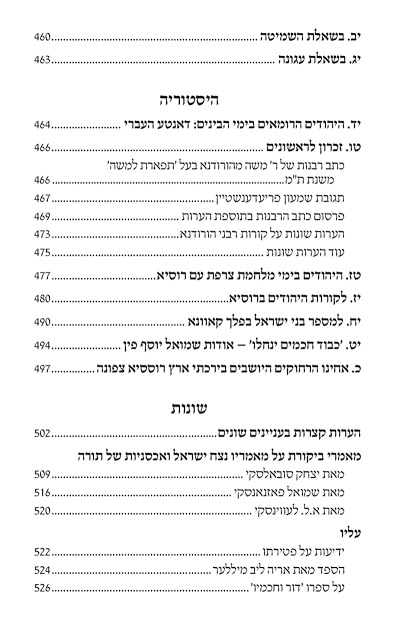New Sefer Announcement: The Collected Writings of R’ Moshe Reines
New Sefer Announcement
by Eliezer Brodt
It is with great pleasure that I announce a sefer that I just printed, The Collected Writings of R’ Moshe Reines.
ר’ משה ריינס מבחר כתבים, אוסף חיבוריו מאמרים ואגרותיו, לג+ 640 +4 עמודים
The sefer will be available for purchase in the US shortly. (We will post that info soon).
A PDF of some sample pages are available upon request, for more information contact me at eliezerbrodt@gmail.com.
What follows is the English introduction to the book. This is an abridged version of the much longer Hebrew introduction included in the book.
A few years ago, while researching the history of the Lithuanian Yeshiva of Volozhin, I came across an article written by Reb Moshe Reines. His article included a few letters between his father, Rabbi Yitzchok Yaakov Reines, rabbi of Lida and leader of the religious Zionist movement, and Rabbi Naftoli Tzvi Yehuda Berlin (the Netziv), head of the Volozhin Yeshiva. These letters were not included in the recent collections of the Netziv’s writings. A short while later I read a small, rare book by Reb Moshe Reines called Dor VeChachomov; a collection of essays about various scholars of his generation. The quality of these writings piqued my interest in Reb Moshe Reines (RMR). I began researching the author and proceeded to search for his other writings. I soon discovered that this brilliant scholar died in 1891 at the very young age of twenty-one, and that precious little else is known about him.
I was introduced to the world of RMR’s father, Rabbi Yitzchok Yaakov Reines, by one of his descendants, my friend Rabbi Yisroel Gordon. As I began collecting RMR’s writings, I suggested to Rabbi Gordon that they are of significant historic interest and that they be reprinted in one modest volume. Rabbi Gordon’s mother, Mrs. Naomi Gordon, great granddaughter of Rabbi Y.Y. Reines, underwrote most of the costs of the project. Mr. Yosef Aronson, great grandson of Rabbi Y.Y. Reines, participated in the financing as well.
After further research, I discovered that RMR was such a prolific writer that the modest volume I had envisioned grew to a much larger size.
My inquiries led me to uncover a significant correspondence between RMR and the renowned scholar Rabbi Shlomo Buber. Over twenty letters from RMR to Shlomo Buber are currently preserved in the Buber collection in the National Library of Israel in Jerusalem. I requested and received permission to copy, transcribe, and print these rare, personal documents. Also included in this collection are several letters by RMR to the writer Judah Leib Gordon.
In addition to this treasure located at the National Library, I discovered an additional thirty-seven letters from RMR to his friend, Micha Yosef Berdeshevsky. Professor Avner Holtzman graciously granted permission to copy, transcribe, and print these letters in this collection. This volume also includes some letters by Rabbi Yitzchok Yaakov Reines to Berdeshevsky, Shlomo Buber, and Shmuel Finn. All of these letters have never been printed before.
Over the course of my research, I discovered that some additional letters by RMR, written to Avrohom Dubsewitz, had been preserved at the New York Public Library. However, copies of those were located too late to be included in this volume.
From his letters it is clear that RMR was a remarkably prodigious scholar. He had expert knowledge of the Talmud. He published articles on Jewish history, and was also educated in other areas of secular knowledge. Further, his command of Hebrew was formidable. This combination of knowledge is quite remarkable, considering his youth.
In a letter to Shlomo Buber (included in this work), Rabbi Y. Y. Reines writes of his devastation after his son’s untimely death, and expresses his desire to write a book about him. Unfortunately, as far as we know, he never got around to doing so.
Significance of this Volume
RMR’s articles were prominently featured in the important newspapers and journals of the day. Some of his essays sparked debates in the periodicals. These debates are included in this collection. His writings shed a light on Jewish life in Russia in the 1880s, dealing with many then-current issues such as Jewish education, yeshivos, and the rabbinate. Some of RMR’s ideas and thoughts on these topics are still relevant today.
RMR writes clearly that he was his own person, presenting ideas that sometimes diverged from those of his father. Yet, his writings reflect his father’s influence, and they serve to illuminate the complex ideas and worldview of his father, the unique and often-misunderstood Rabbi Y.Y. Reines.
This volume also includes numerous letters from RMR’s correspondence with various personages of the time. These letters, printed here for the first time, are autobiographical in nature. As with much autobiographic material, these letters are historical documents, offering an authentic glimpse into an era.
Highlights
The first section of RMR’s collected writings is a small book entitled Dor VeChachomov. His original plan was to write essays on the lives of fifty Jewish scholars of the day. Twelve essays from this collection were printed in his lifetime; four more were printed after he died. His choice of subjects is explained in his letters to Shlomo Buber. Apparently, RMR was commissioned to write about living personalities about whom no biographies had yet been written, thus limiting his choice of subjects. He requested of his subjects that they send him a biography and a bibliography of their writings. Some of them did not respond. For those who did, he wrote up their information and added his own introductory paragraphs (some with highly interesting, tangential discussions). Among the more famous scholars he included in the book were: Binyomin Ze’ev Bacher, Avraham Berliner, Shlomo Buber, and Avraham Harkavi. These essays are the first biographies written about them.
Another essay is titled Achsanyah Shel Torah. This essay was supposed to develop into a small book, but sadly he never completed it. It deals with the yeshiva in Volozhin and the Kovno Kollel, and contains many fascinating details. Included in this section are six letters from the Netziv to Rabbi Y.Y. Reines.
Another noteworthy essay is Hasafrut Hatalmudut VeHamedrashit. This essay addresses different aspects of publishing seforim. One section deals with the challenges authors face getting their work printed and gaining proper recognition. One senses that this section reflects his and his father’s personal experiences. Another part of this essay is devoted to the importance of book reviews and the role of proper haskamos (approbations). A third part suggests creating a fund for poor writers. Many of the issues raised in this essay remain relevant for authors today.
One of the longer essays in this volume is Netzach Yisroel, an in-depth treatment of a proposal to establish a genealogical museum in Jerusalem, housing family trees in an organized fashion, including pictures of family members. RMR encouraged sending the proposed museum any material of historical significance, including works published or unpublished. One section of RMR’s essay focuses on the importance of pictures, another on the importance of family trees. The last section is devoted to the importance of living in Eretz Yisroel. In it, RMR included a beautiful letter from his father on the subject.
Some of the essays deal with the need to establish a curriculum for the education of a rabbi, detailing what subjects, besides the requisite Torah knowledge, a rabbi needs to know. The issue of educating rabbis in areas other than Torah, without compromising their Torah studies, is discussed. This subject was very important to Rabbi Y. Y. Reines, who opened more than one yeshiva with that challenging agenda.
Related to this is an essay about the pilpul method of learning. Much has been written and continues to be written on this subject. In this essay, RMR analyzes the pilpul method, listing the issues that have been raised about it, and demonstrating its weaknesses. He advocates a method based on rules of logic, a method advanced and written about by his father.
RMR wrote many times and at great length about haskalah, the Jewish enlightenment movement. His approach to haskalah was that one should “accept the truth from whoever says it,” as did the tanna Rabbi Meir (Chagigah 15b), whose approach to the impious teacher Acher was to take the good and leave behind the bad.
Thus, in a letter to Judah Leib Gordon, he writes:
“Although from a religious perspective you and I are as far apart as are Lida and Pressburg, for you are utterly irreligious (as your demands for “reformations in religion” prove!), and I am completely conservative in religious matters and in all my days have never transgressed even the slightest custom which has become sanctified in the course of time (save foolish and deviant customs, such as spitting during the recitation of alienu l’shabeiach, which from my youth has aroused in me repulsion and is intolerable to me); however with regard to haskalah, my views are exactly like yours and my heart identical to yours.”
RMR’s letters are vastly informative regarding his special relationships with Shlomo Buber, Shmuel Finn, and Micha Yosef Berdishevsky. They also include tidbits about his parents, his brother, pen names he used, and other articles he planned on writing.
One last interesting, bibliographical piece we learn from the letters regards the anonymous work Hakolos Yechdalun (Bardichov, 1887), an attack on Rabbi Y.Y. Reines’ work and new method of learning. In various letters we read about RMR’s strong reaction to the work. We also learn that he showed it to his father. Until now, bibliographers were not certain who the author was, suggesting it was one Rabbi Yaakov Tzvi Yanovski. From RMR’s letters, it appears clear that indeed Rabbi Yanovski is the author.
Aside from presenting the writings of a brilliant young scholar, this volume opens a window into the intellectual ferment of the Jewish world in the late nineteenth century.
Here are the table of contents:



